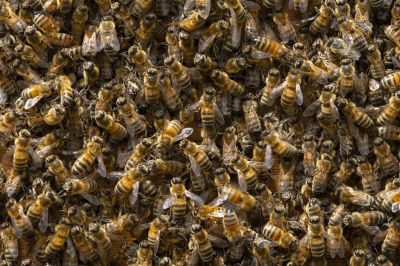Essential Products For Beehive Removals To Simplify Your Job
Identify key tools and supplies that help you perform beehive removal quickly, safely, and with minimal hassle.
 Removing a beehive can be a delicate task that requires specialized products to ensure safety and effectiveness. The process often involves handling live insects and their hive structures, so choosing the right tools and supplies is essential. Proper equipment can help facilitate a safe removal, minimize disturbance to the bees, and prevent damage to property. Whether you are a professional beekeeper or a homeowner dealing with an unexpected hive, having access to the appropriate products can make the process more manageable.
Removing a beehive can be a delicate task that requires specialized products to ensure safety and effectiveness. The process often involves handling live insects and their hive structures, so choosing the right tools and supplies is essential. Proper equipment can help facilitate a safe removal, minimize disturbance to the bees, and prevent damage to property. Whether you are a professional beekeeper or a homeowner dealing with an unexpected hive, having access to the appropriate products can make the process more manageable.
Top Overall Option
Complete Beehive Removal Kit
A comprehensive beehive removal kit typically includes protective gear, hive tools, smoker, and hive boxes, making it suitable for both professionals and DIY enthusiasts. These kits are designed to provide all necessary components in one package, streamlining the removal process and ensuring safety. They are versatile enough to handle various hive sizes and locations, offering a practical solution for effective hive management.
Types of Products For Beehive Removals
Bee Suit and Protective Gear
Protective clothing designed to prevent stings during hive removal, including suits, gloves, and veils.
Hive Removal Tools
Specialized tools such as hive scrapers, hive hooks, and hive knives for dismantling and removing hive components.
Bee Smoker
A device that produces smoke to calm bees and reduce their aggression during removal.
Hive Boxes and Frames
Containers and frames used to relocate the hive or to temporarily house bees during removal.
Insecticides and Repellents
Chemical agents used cautiously to deter bees from specific areas or to assist in hive removal.
Bee Traps and Baits
Devices designed to attract and trap bees, often used in the initial stages of removal.
Ladders and Access Equipment
Tools to safely reach hives located in high or hard-to-access areas.
Hive Cleaning Supplies
Products for cleaning and disinfecting hive components after removal.
Protective Footwear
Sturdy boots or footwear designed to prevent stings during hive handling.
Transport Containers
Secure containers for relocating bees safely to new habitats.
Bee Removal Suits with Ventilation
Enhanced suits with ventilation features for extended removal tasks.
Electric Bee Fences
Devices used to deter bees from specific areas or entry points.
Battery-Powered Hive Tools
Cordless tools that facilitate hive dismantling with ease and mobility.
Hive Inspection Cameras
Remote cameras to assess hive conditions before removal.
Noise Devices
Equipment that emits sounds to help calm or deter bees during removal.
Protective Veils and Face Shields
Additional facial protection to prevent stings during hive handling.
Beekeeping Gloves
Durable gloves for safe handling of hive components and bees.
Popular Choices
A full-body protective suit with an integrated veil for safety during hive removal.
An entry-level kit including essential tools and protective gear for small-scale removals.
A portable smoker device to calm bees effectively during hive handling.
A set of hive tools designed for efficient dismantling of hive structures.
Sturdy gloves offering protection and dexterity for hive work.
Secure containers for relocating bees safely to new locations.
Adjustable ladders suitable for accessing hives in elevated positions.
Sprays used cautiously to discourage bees from specific areas.
Remote monitoring devices to observe hive activity before removal.
Cordless tool for prying apart hive components with ease.
Sturdy boots designed to protect against stings during hive handling.
Sound devices used to help calm or deter bees during removal.
A suit with enhanced airflow for extended hive removal efforts.
Non-chemical methods to encourage bees to vacate a hive area.
A cart designed for easy movement of hive boxes and equipment.
A mirror to view hard-to-see hive areas safely.
Fencing to prevent bees from entering certain zones.
Beekeepers and pest control professionals typically utilize a variety of tools designed for hive removal. These include protective gear such as bee suits, gloves, and veils to prevent stings. Additionally, hive removal kits often contain specialized tools like hive scrapers, hive boxes, and smoke devices that help calm the bees and make the removal process smoother. For those undertaking a DIY approach, selecting the right combination of equipment can significantly influence the safety and success of the operation.
When selecting products for hive removal, it is important to consider the size of the hive, the location of the hive, and the level of experience of the person performing the removal. Some products are designed for small, easily accessible hives, while others are suitable for larger or more complex structures. Properly chosen tools can also help protect the surrounding environment and minimize the impact on nearby bees and other wildlife. Overall, investing in quality, versatile products can contribute to a more efficient and safer hive removal experience.
Key Buying Considerations
- Size and accessibility of the hive to determine appropriate tools.
- Level of protection required based on hive location and bee activity.
- Material durability and comfort of protective gear.
- Compatibility of tools with hive structures and materials.
- Ease of use for both DIY enthusiasts and professionals.
- Portability and storage options for equipment.
- Compatibility of smoke devices with hive size and location.
- Safety features such as reinforced gloves and secure suits.
- Environmental conditions where the removal will take place.
- Budget constraints and cost-effectiveness of the products.
- Availability of replacement parts and accessories.
- Ease of cleaning and maintenance of tools and gear.
- Potential need for chemical agents versus non-chemical options.
- Compatibility with relocating or destroying the hive, depending on goal.
- User reviews and recommendations for product reliability.
